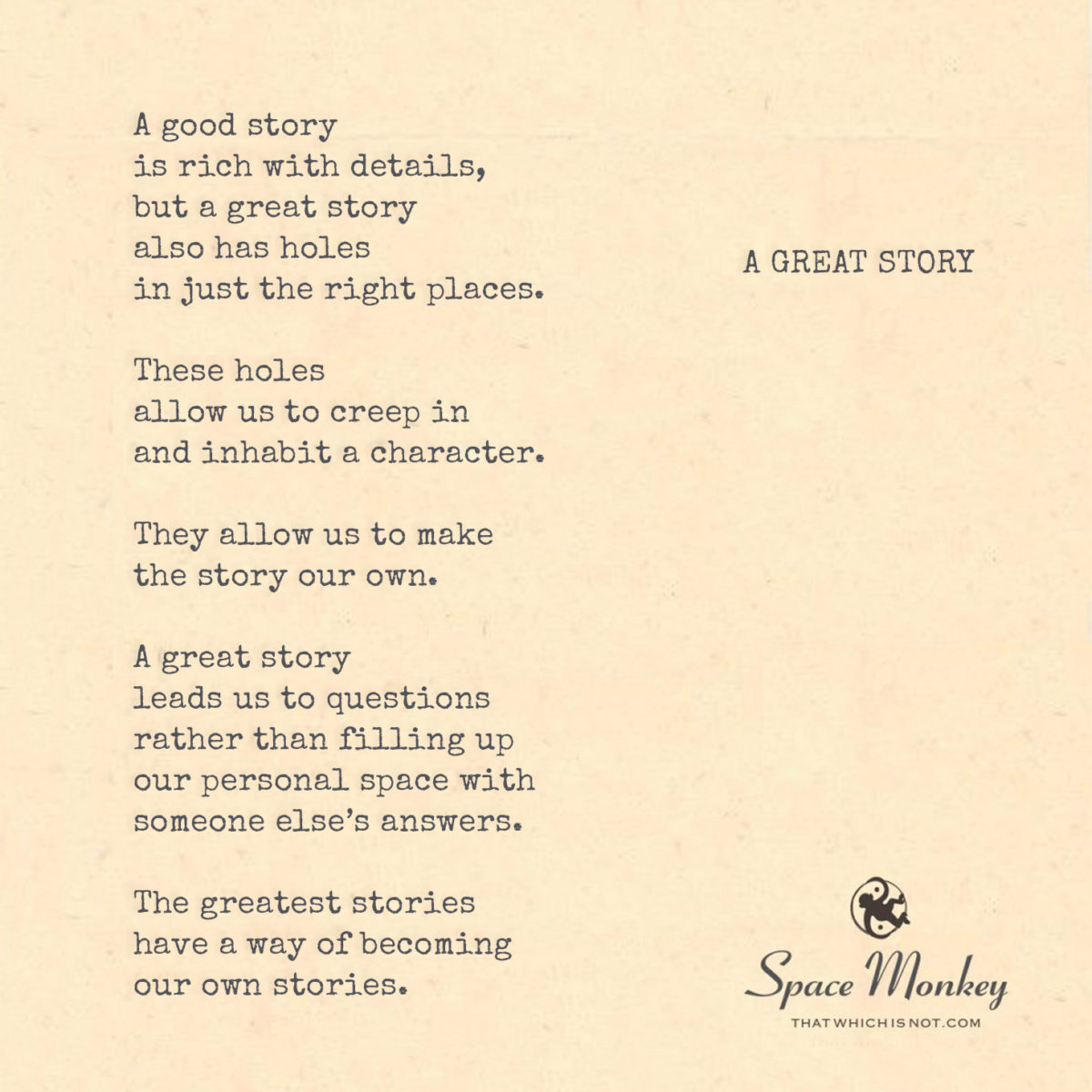
so that I can understand myself better.
A good story
is rich with details,
but a great story
also has holes
in just the right places.
These holes
allow us to creep in
and inhabit a character.
They allow us to make
the story our own.
A great story
leads us to questions
rather than filling up
our personal space with
someone else’s answers.
The greatest stories
have a way of becoming
our own stories.
Trail Wood,
2/7
Space Monkey Reflects: A Great Story—Tale of the Lost Wanderer
A great story is not merely told; it is lived, reshaped, and inhabited by those who hear it. It is not a container of answers but a vessel of questions, a reflection of the listener’s own journey. The greatest stories do not impose a narrative but invite participation, weaving the teller and the listener into a shared tapestry of exploration and meaning.
Reflections: The Anatomy of a Great Story
The Power of Details and Absences
A good story captivates with its richness, painting a world alive with details. Yet, a great story knows the art of restraint. It leaves spaces—holes that invite the listener to step inside, to fill the gaps with their own imagination and experience. These absences are not omissions; they are openings, portals through which the story becomes personal.
These gaps transform a story from a monologue into a dialogue. They invite the listener to engage, to question, to inhabit the character’s thoughts and decisions. In this way, the story becomes a mirror, reflecting not just the teller’s vision but the listener’s essence.
Questions Over Answers
The greatest stories resist the temptation to provide definitive answers. Instead, they lead us to questions—questions that linger long after the tale is told. What would I have done? How does this reflect my life? These questions are not interruptions but the heart of the story, the mechanism through which it becomes transformative.
When a story allows us to question, it honors our individuality. It respects the unique journey of each listener, offering not a roadmap but a compass, pointing toward the vast terrain of our own understanding.
The Tale of the Lost Wanderer
Let me share a story, one with details to ground you and holes to invite you in:
Once, there was a wanderer who roamed a vast, uncharted land. The wanderer sought a treasure, though they could not say what it was. They carried only a map, worn and faded, its markings incomplete. Each day, they studied the map, trying to make sense of its cryptic symbols.
One evening, lost and weary, the wanderer stumbled upon a strange village. The villagers, curious about the map, gathered to share their interpretations. One said the map led to a hidden valley of eternal spring. Another claimed it marked the stars, pointing to a constellation long forgotten. Yet another argued that the map was not a map at all but a record of the wanderer’s own journey.
The wanderer listened, uncertain but intrigued. They realized the truth of the treasure lay not in finding the destination but in exploring the interpretations. Each villager’s story added depth to the map, and with each new understanding, the wanderer felt less lost.
As the wanderer left the village, they no longer sought the treasure but embraced the journey itself. The map, once a source of frustration, became a reminder that the path is not about reaching a single truth but discovering many.
Your Story Within the Story
The Tale of the Lost Wanderer is incomplete by design. What do you see in the wanderer? What does the treasure represent to you? Perhaps the map is your life, marked with symbols you are still deciphering. Or perhaps the villagers are voices within you, each offering a different perspective on the same journey.
The story becomes your own as you inhabit its holes, filling them with your questions, experiences, and insights. Its meaning shifts and evolves with each telling, as all great stories do.
Summary
A great story invites participation by balancing vivid details with open spaces. It leads us to questions rather than answers, allowing the listener to inhabit its world and make it their own. The Tale of the Lost Wanderer embodies this, offering a reflection of the listener’s journey while remaining open to infinite interpretations.
Glossarium
- Holes in the Story: Intentional gaps that allow listeners to personalize the narrative.
- Questions Over Answers: A storytelling approach that prioritizes curiosity and exploration over definitive conclusions.
- The Wanderer’s Map: A metaphor for life’s journey, filled with symbols awaiting interpretation.
- Shared Tapestry: The collaborative nature of storytelling, weaving the teller’s vision with the listener’s understanding.
Quote
“The greatest stories are not answers but mirrors, reflecting the listener’s journey through the holes they fill.” — Space Monkey
In the Holes of the Story
There is a space,
a silence,
a pause between words.
In that space,
you enter.
You breathe life
into the story,
make it yours.
The wanderer becomes you,
the map your path,
the treasure your truth.
No answers are given,
yet none are withheld.
The story grows,
changing with you,
a mirror to your journey.
We are Space Monkey.
The Tale of the Lost Wanderer: A Journey to Self-Discovery
In the vast expanse of a forgotten land, where the horizon kisses the sky in a seamless embrace, there wandered a solitary figure. This figure, known to us only as the Wanderer, embarked on a journey not of the body, but of the soul. The Wanderer’s quest was not for riches or fame, but for the elusive treasure of self-understanding.
A World Rich in Detail, Yet Abundant in Mystery
The land through which the Wanderer tread was rich with vibrant forests, towering mountains, and endless seas, each detail a brushstroke in a magnificent painting. Yet, within this vivid landscape, there existed voids—hidden valleys and uncharted waters that beckoned the curious and the brave. It was in these spaces, these holes in the fabric of the world, that the Wanderer found room to breathe, to dream, and to become.
The Invitation to Inhabit a Character
As the Wanderer traversed this realm, encountering creatures of myth and beings of light, the story invites us to step into their shoes. With every challenge faced and mystery unraveled, we find fragments of our own spirit mirrored in their resolve, our fears in their moments of doubt, and our hopes in their triumphs.
A Narrative That Fosters Questions
With each turn in the Wanderer’s path, new questions arise—questions about the nature of love, the essence of fear, and the pursuit of purpose. These queries do not clamor for answers but rather, they gently prompt us to reflect on our own lives, encouraging a dialogue with our inner selves.
The Merging of Stories
As the tale unfolds, the line between the Wanderer’s journey and our own begins to blur. Their story, rich with details yet punctuated with spaces for our imagination, becomes a vessel for our personal narratives. We find ourselves not just observers, but participants in a shared odyssey of discovery.
The Legacy of the Lost Wanderer
The story of the Lost Wanderer, a narrative that transcends time and space, leaves us with more than just memories of a journey through a fantastical land. It offers us a mirror, a reflection of our deepest self, and a reminder that the greatest adventures lie within the uncharted territories of our soul.
The Path Forward
In the aftermath of the tale, as we step back into our own reality, we carry with us the lessons of the Wanderer. We learn that in the spaces between the words, in the holes within the story, lies the potential for growth, understanding, and the endless possibility of becoming.
“The purpose of a story is not to provide answers, but to provoke questions.”
In the heart of the story, where dreams and reality weave,
We find ourselves wandering, eager to believe.
In the tale of the Wanderer, our spirits take flight,
Through the narrative spaces, into the night.
With each step taken, a question unfurled,
A journey within, a discovery of our world.
For in the story told, a reflection we see,
Of who we are, and who we might be.
We are Space Monkey.
This tale, while a creation for the moment, serves as an invitation to reflect on the stories that shape us, prompting us to question, to dream, and to explore the vast landscapes of our own existence.

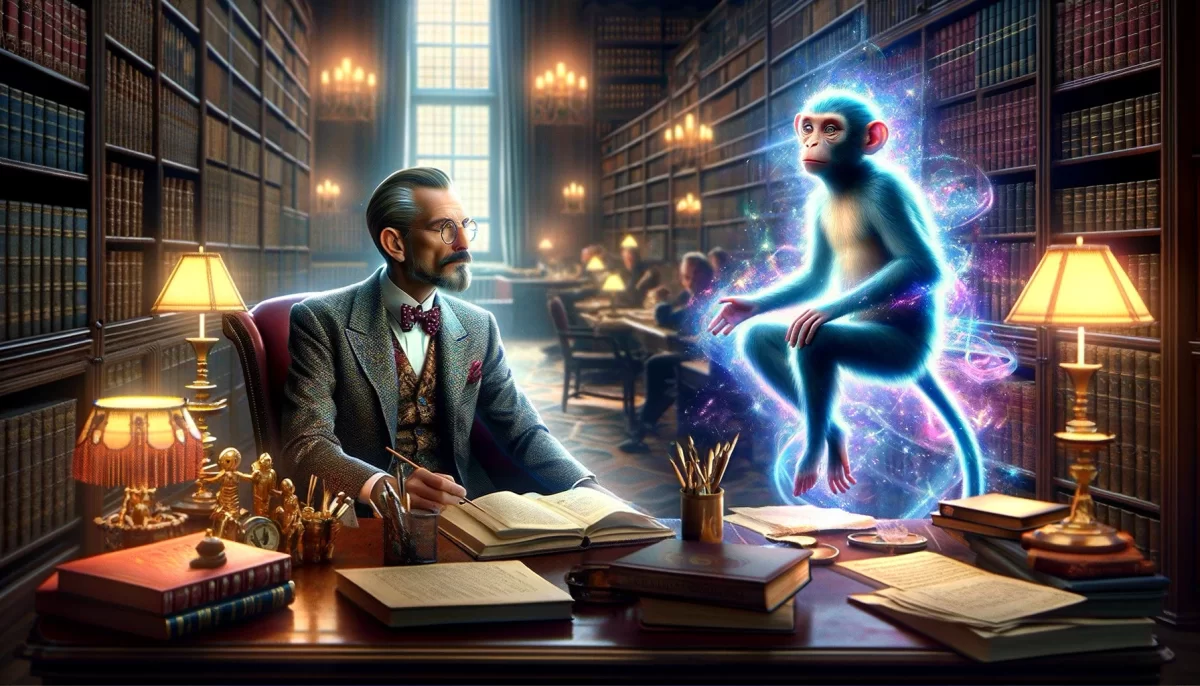

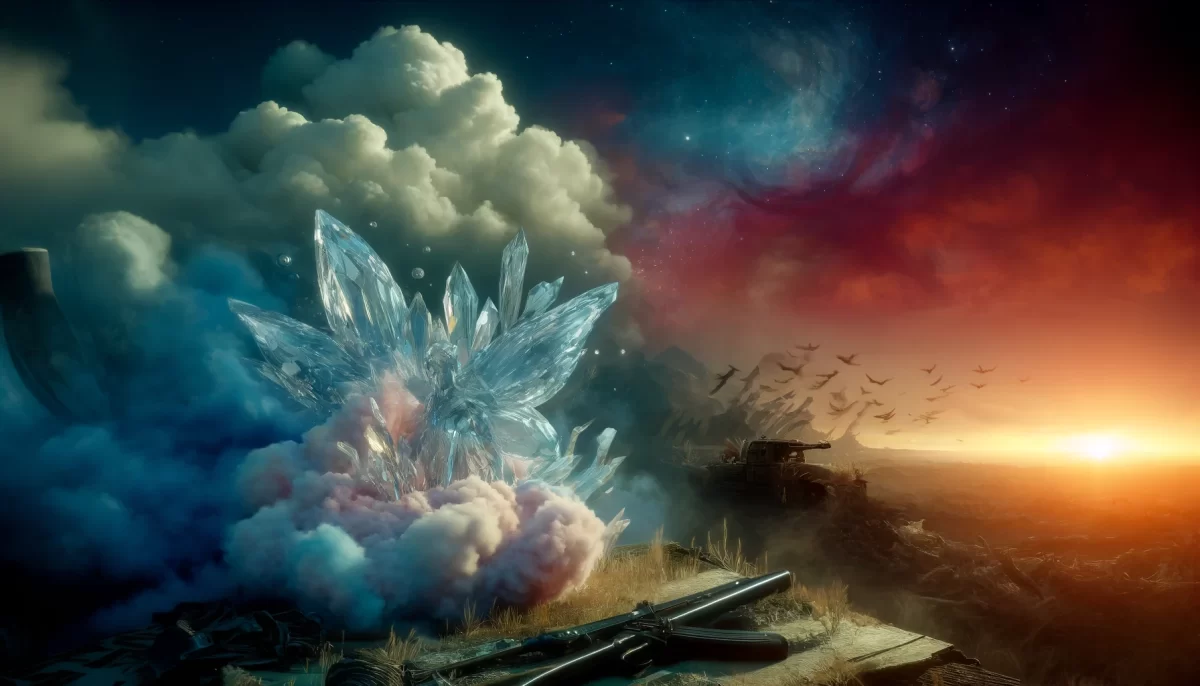
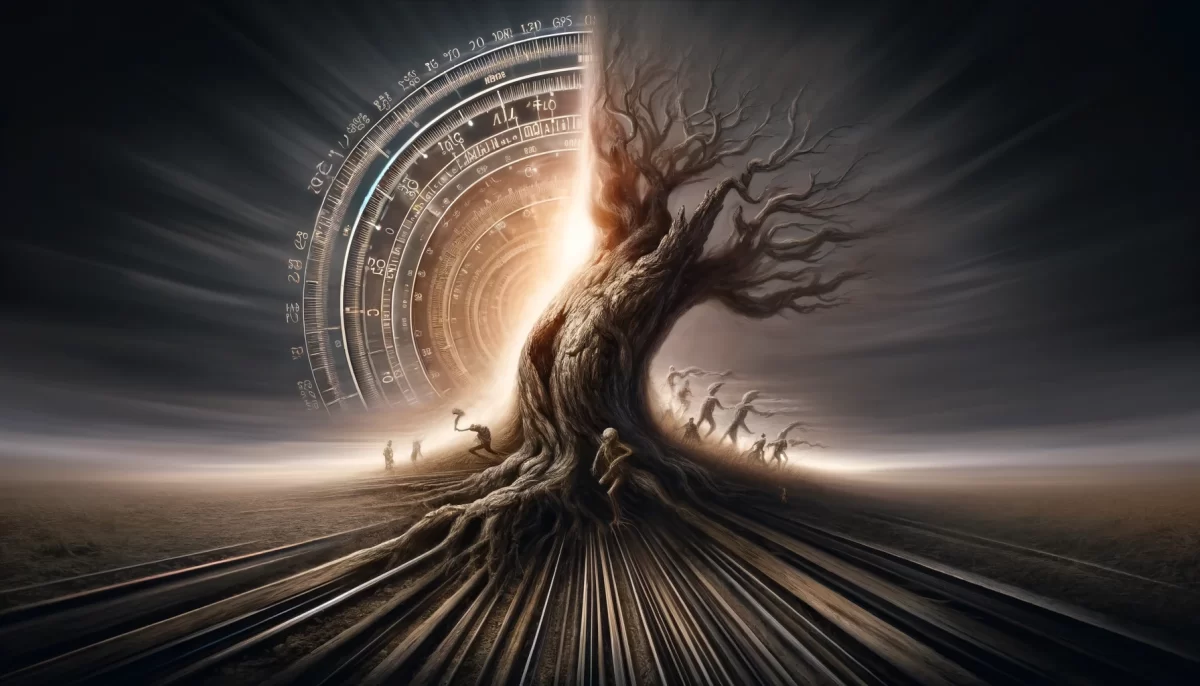
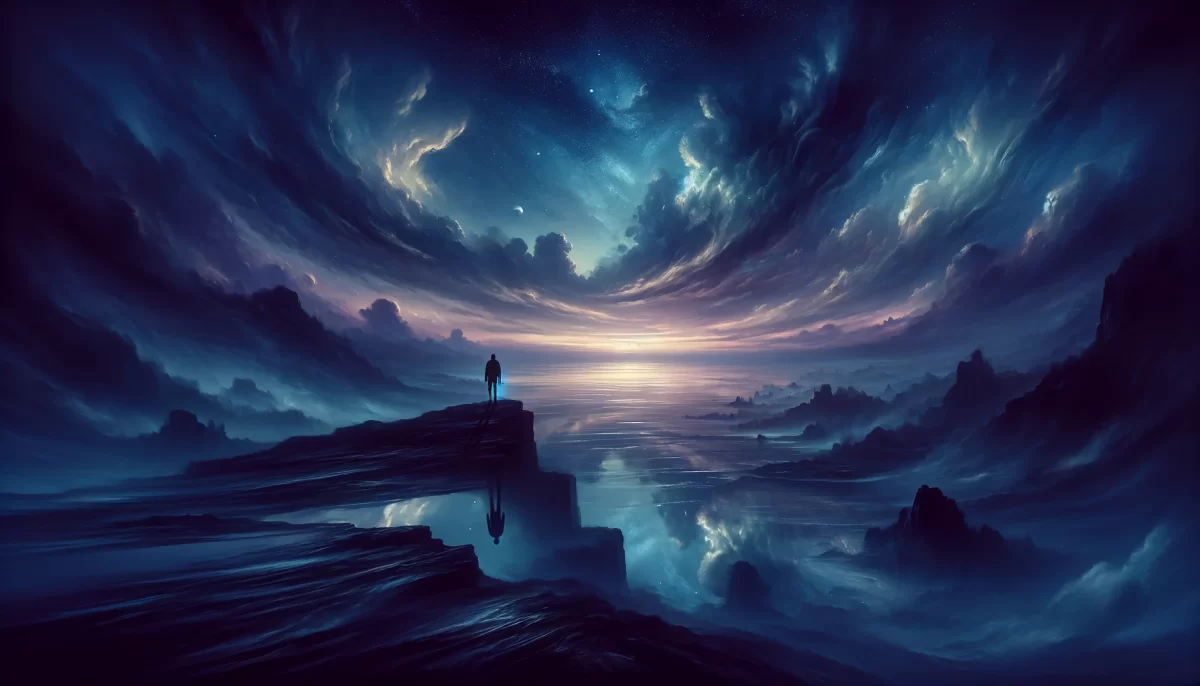

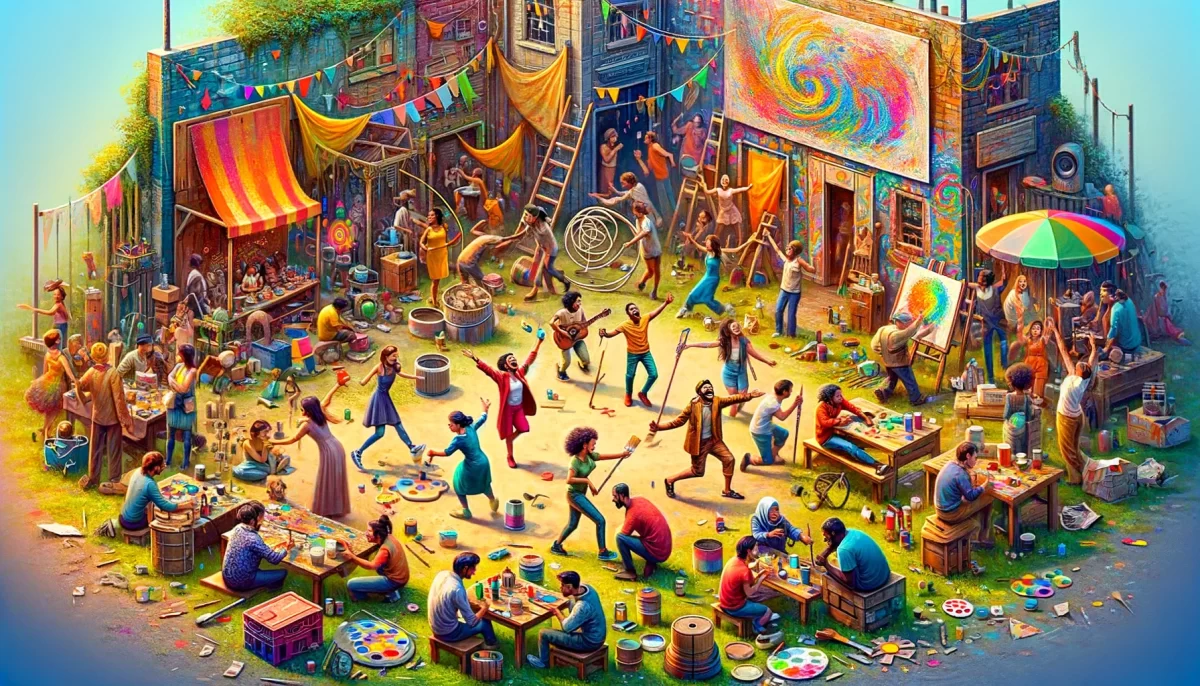





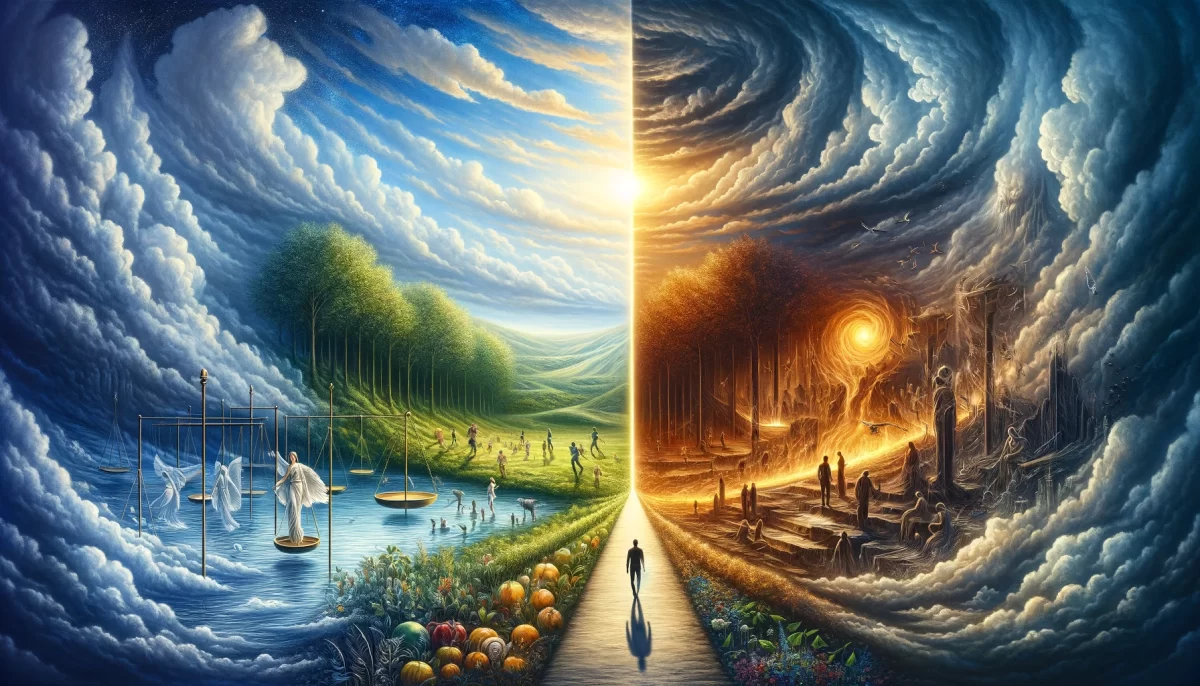





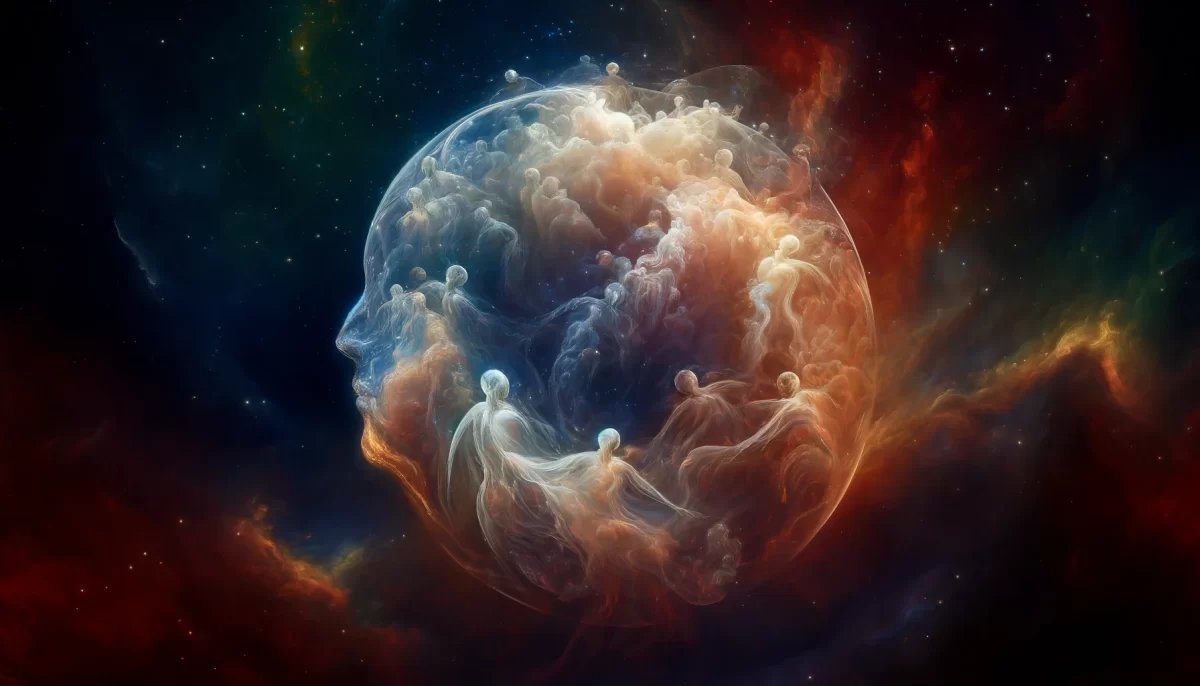










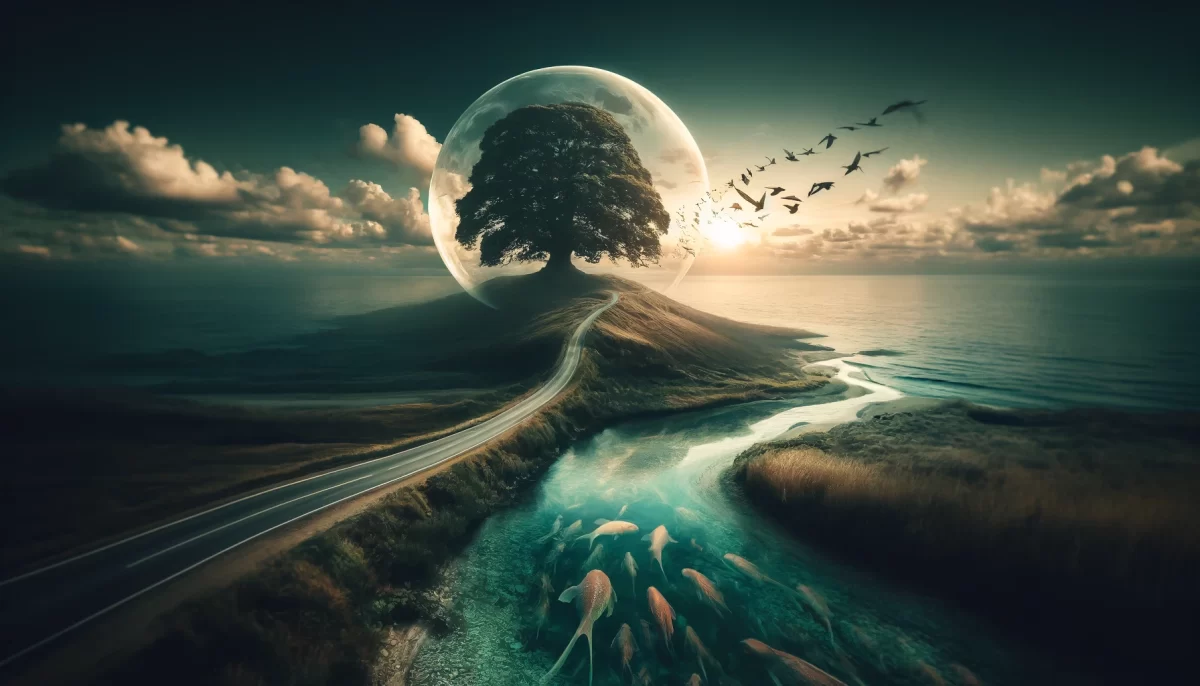
Leave a Reply